Attributed as unknown but originating in the Bronx district of New York, the following rhyme comes to mind at this time of year:
“Spring has sprung, the grass has riz, I wonder where da boides is. Da boides is on da wing. Don’t be absoid, Da wings is on da boid!”
This time of year lifts the spirits as the hours of daylight lengthen and warmer days becoming more frequent. It has been a wet winter here at Marribrook, but not necessarily a cold one. The wood heater has been keeping us warm indoors and much cooking has been done on its flat top. There is plenty of green feed in the paddocks and all the animals are doing well, including the rabbits, but more about them another time.
The list of birds seen at Marribrook is a long one and bird watching can be fascinating and absorbing, sending us to the bookshelf or Google to identify some of them. The binoculars are always to hand.
Heading the list of small birds is the ubiquitous Willy Wagtail who collects insects around the veranda or hops in front of the grazing sheep, feeding on the insects they disturb, even perching on the sheep’s backs for a better view.
ABB is synonymous for “another brown bird” as we have several species of Weebills and Thornbills that feed around the house. They build huge suspended nests in the trees and occasionally we find a broken one such as this one, where the bottom has fallen off. Such a big nest for such a small bird!
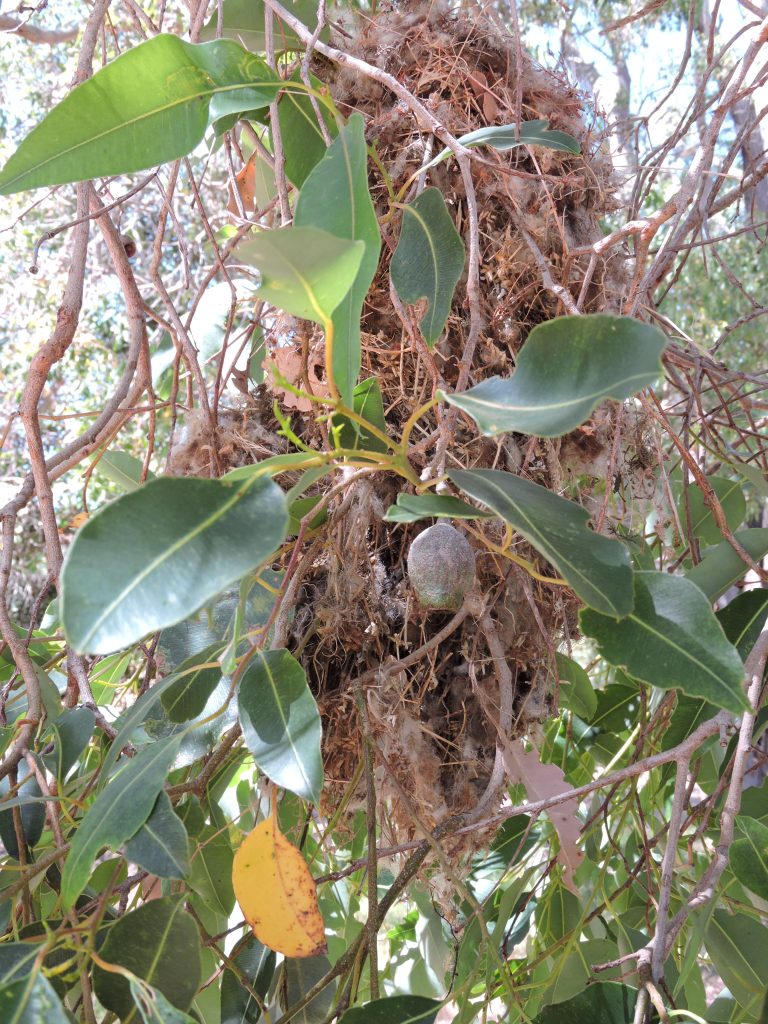
The most beautiful of the small birds is the Blue Wren that can be seen in large groups around the farm and who also have a beautiful song. Here is one in the process of changing his plumage. The female however is a dull brown bird, but easily identified by her long dark blue tail.
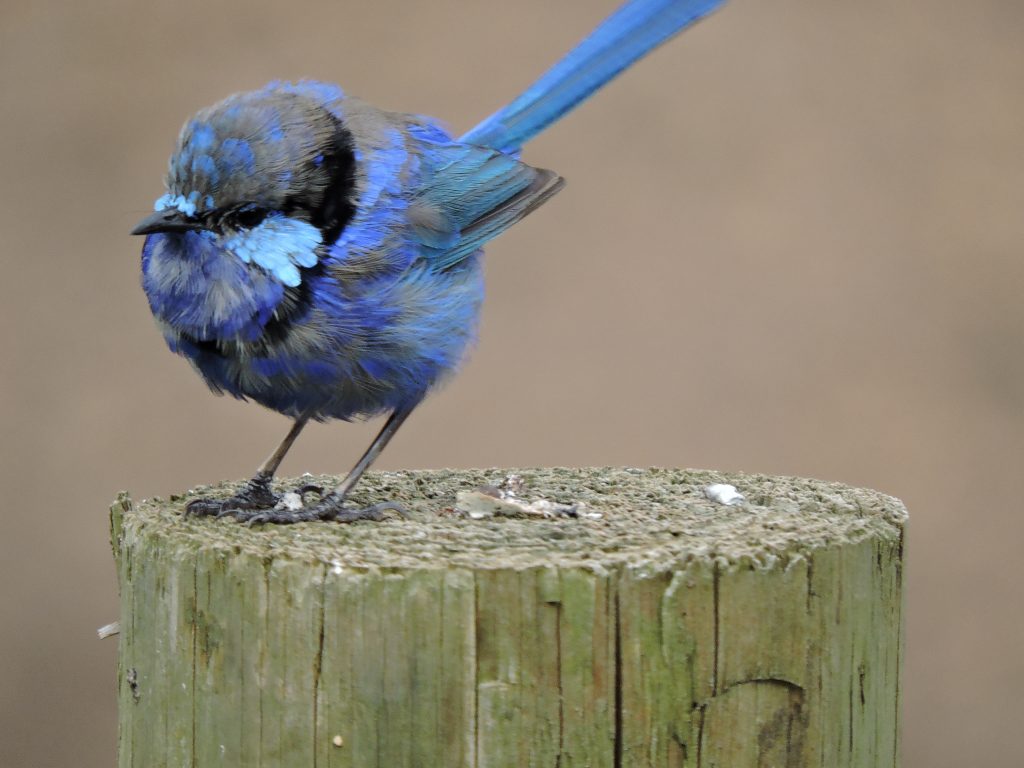
Another small bird commonly seen is the Grey Fantail who uses its large tail for stability. The Red-capped robin has a beautiful scarlet forehead and chest to offset his black plumage, whilst the female is brown with a more pinkish chest, but equally as striking. One resident male has been know to attack the wing mirrors of any vehicle parked near the house, seeing his reflection as a potential rival. The Welcome Swallows nest in the hayshed and more recently, in the big shed beside the house. They are often seen circling over the main dam usually as the sun goes down, feeding on the insects, so we are grateful to them for keeping the mosquito numbers down. Also seen occasionally are the New Holland Honeyeaters with their bright yellow, black and white plumage and long curved beak for poking into the flowers. The Western Silvereye frequents the bushes and is one of the birds that likes to feed on stonefruit. Also seen occasionally is the Spotted Scrub Wren and the Golden Whistler – the dowdy female and the bright yellow male.
Moving on to the slightly larger birds we see and hear the Magpie Lark with their melodious song, the Red Wattlebird and the Common Bronzewing Pigeon. Then, getting larger, we have the Western Magpie who live in large family groups and who have the most glorious song library, said to be the largest repertories of all the birds.
The Laughing Kookaburra is not indigenous to this part of Australia but was brought here from the Eastern States a long time ago. They also live in family groups and entertain us with their raucous voices.
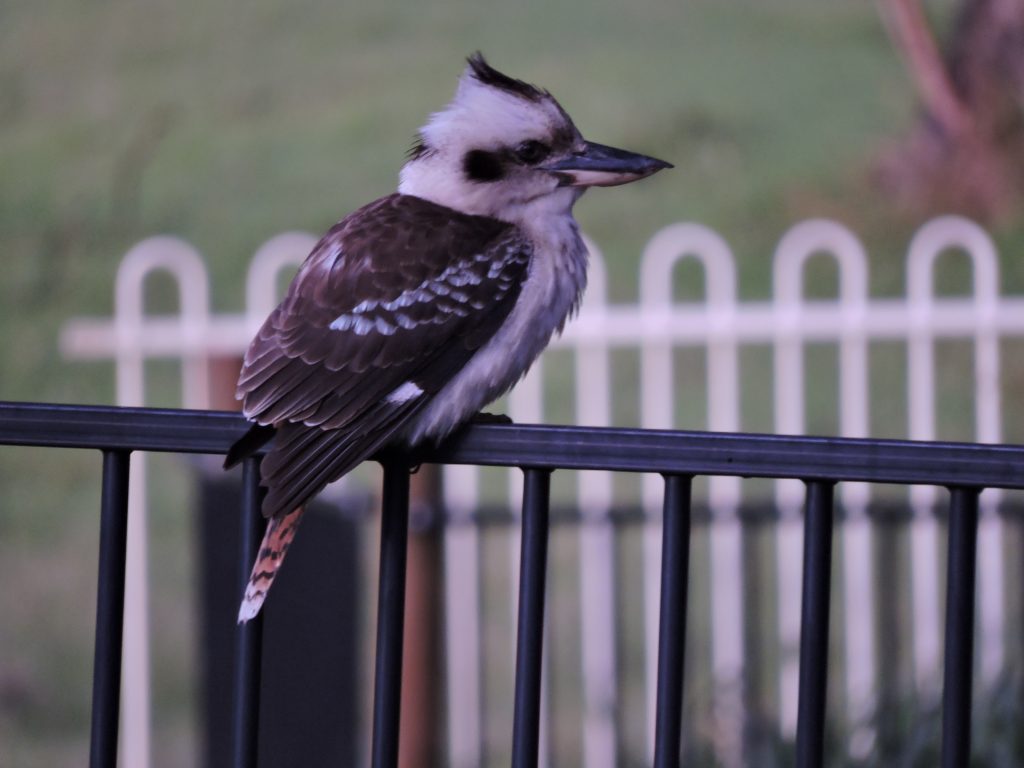
The Australian Raven, commonly referred to as a Crow with its “ark ark” call, is always on the lookout for a free feed, be it fruit, carrion, eggs or young birds. The other birds always try to scare them away, the Willy Wagtail being the most persistent despite the discrepancy in size.
After dark, we hear the noise of the night hunters, mostly the Boobook Owl, commonly known as the Mopoke for its characteristic call.
Australia’s biggest raptor is the Wedge-tailed Eagle that soars on the updrafts. We have lost a few chooks to them over the years and even seen one try to take one of our geese.
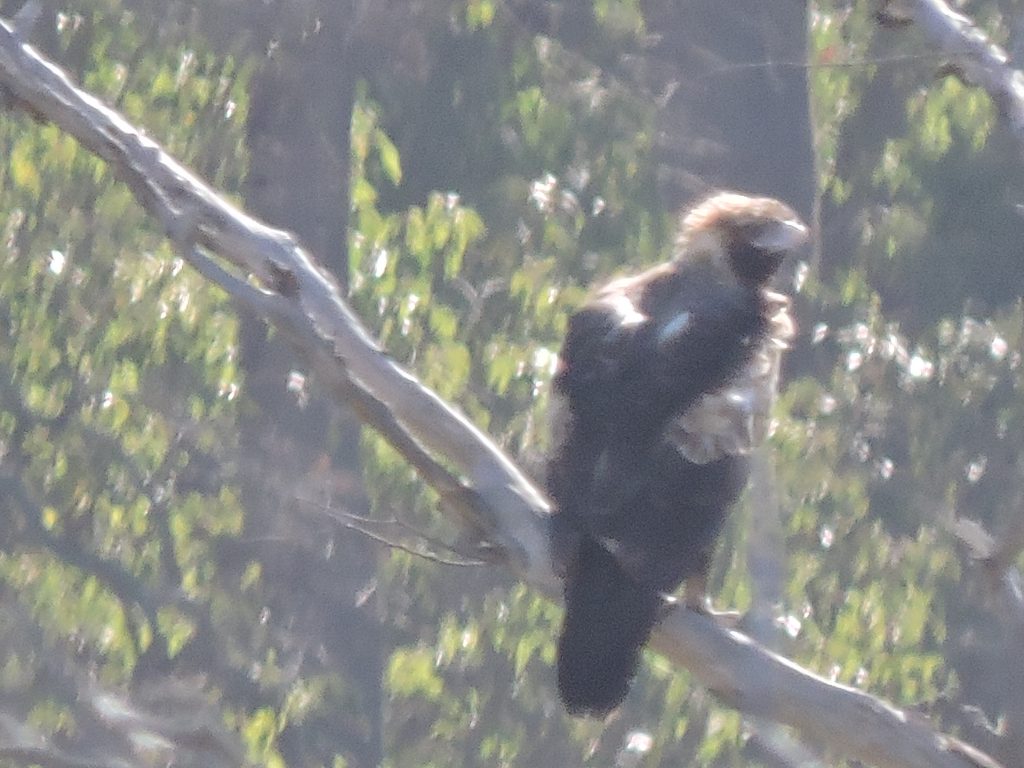
The biggest of all the Australian birds, the Emu, occasionally visits, strutting the outside of our boundary fences. They live in the forest around us and are a menace when they run out onto the road in front of a moving vehicle. They can run at great speed and having sighted one, there are often others close behind.
We have 4 species of the parrot family here, the smallest of these being the Western Rosella that are ground feeders and can often be seen in small flocks eating the grass and weed seeds. Here are a pair, again with the male having the more colourful plumage.
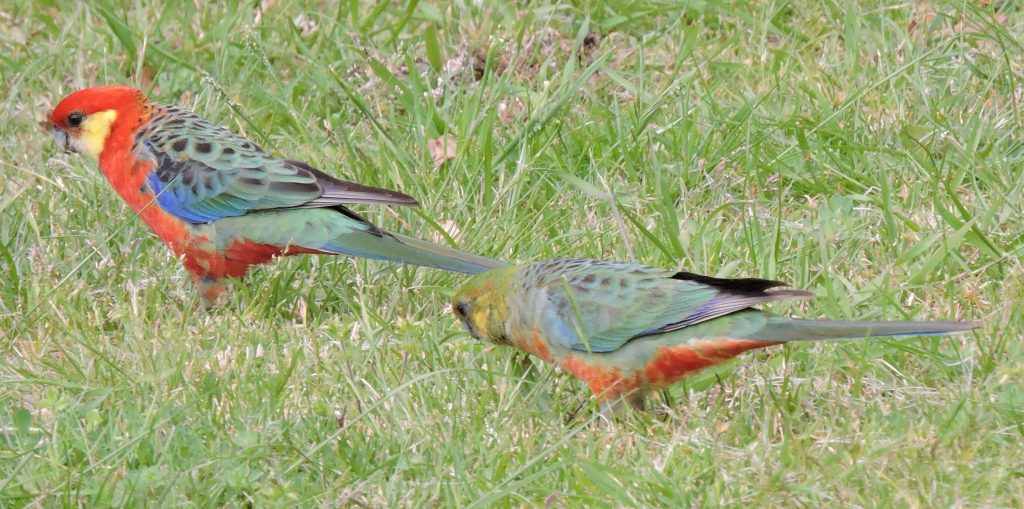
Slightly bigger are the Port Lincoln Parrots, commonly known as 28’s for their raucous call, or Ring Necks for their yellow collar. These birds are a real menace as they will eat all sorts of crops. We have to put nets on our stone fruit and apple trees to make sure we get some fruit for ourselves. They also take the olives, strip leaves and blossom off some of the trees and in February 2019, they ate nearly all our sweetcorn cobs. However they also spend time on the ground, feeding on the weed seeds and the kikuyu rhizomes.
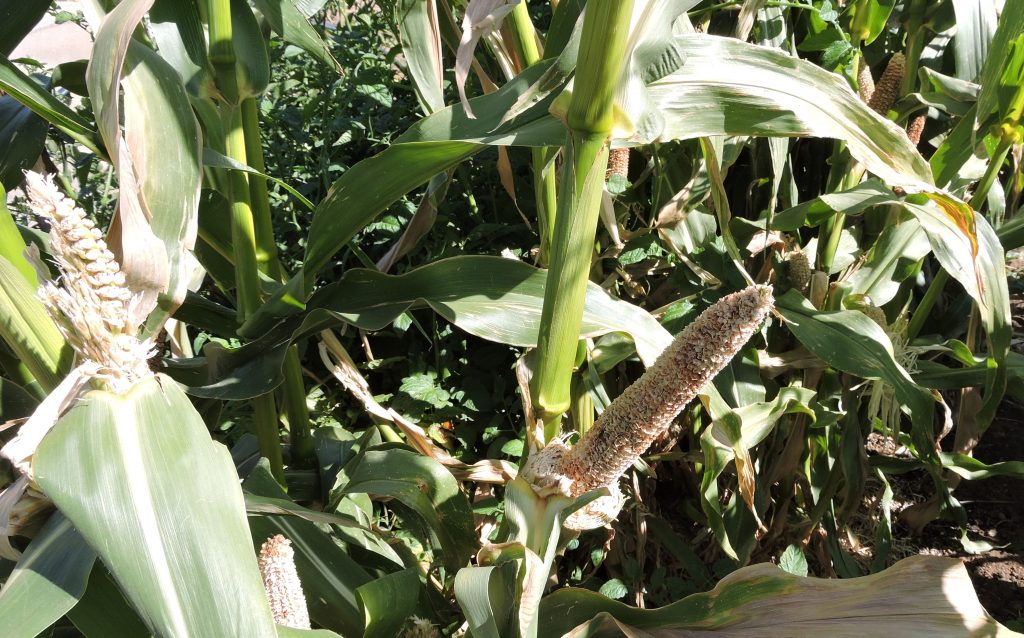
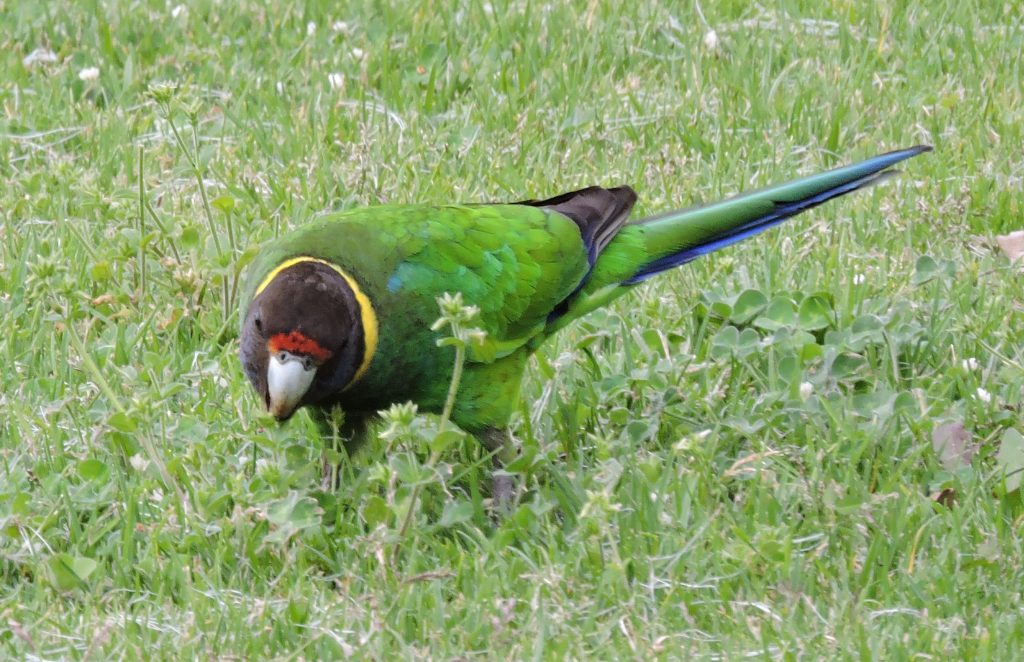
The biggest species to visit are the Black Cockatoos. We have both the Red Tail and the White Tailed species and they can be seen in pairs or flocks. They like to feed on the large gum nuts of the marri trees, making quite a mess and creating a hazard underfoot. They too can be quite noisy when squabbling in the trees or calling out as they fly overhead.
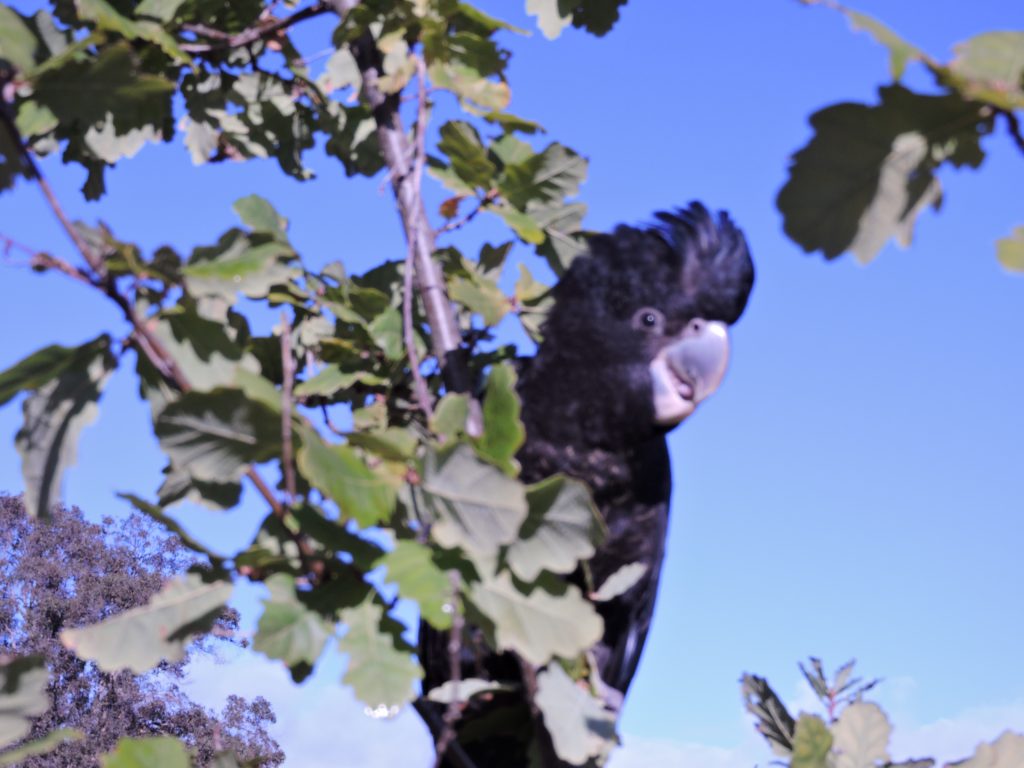
We have 6 bodies of water on the property that attract a variety of water birds, both waders and swimmers. The smallest of the waders is the Red-kneed Dotterel that prowls the water’s edge. We have quite a number of resident Western Swamp Hens that breed here each year. They can run quite fast when chasing a rival, fly low and clumsily or swim. When feeding on land, they flick their tails to show their white nether regions. Larger wading birds that visit occasionally are the White-faced Heron, the White Egret, the White Ibis and the Yellow-billed Spoonbill.
Of the swimmers, the smallest residents are the Australian Little Grebe which are fascinating to watch as they dive below the water and reappear some distance away. Hopefully they eat more tadpoles and insect larvae than marron larvae. Somehow, I don’t think that’s true of an occasional visitor, the Pied Cormorant.
We have several pairs of Coot, even more pairs of Black Duck and up to 100 Wood Duck, all breeding successfully. The ducks nest in trees and the ducklings are forced to jump a long way to the ground when newly hatched, to be led to the water for an introductory swim. Hatchings can sometimes be over a dozen and the parents keep a close eye on them as they grow, though there are always casualties.
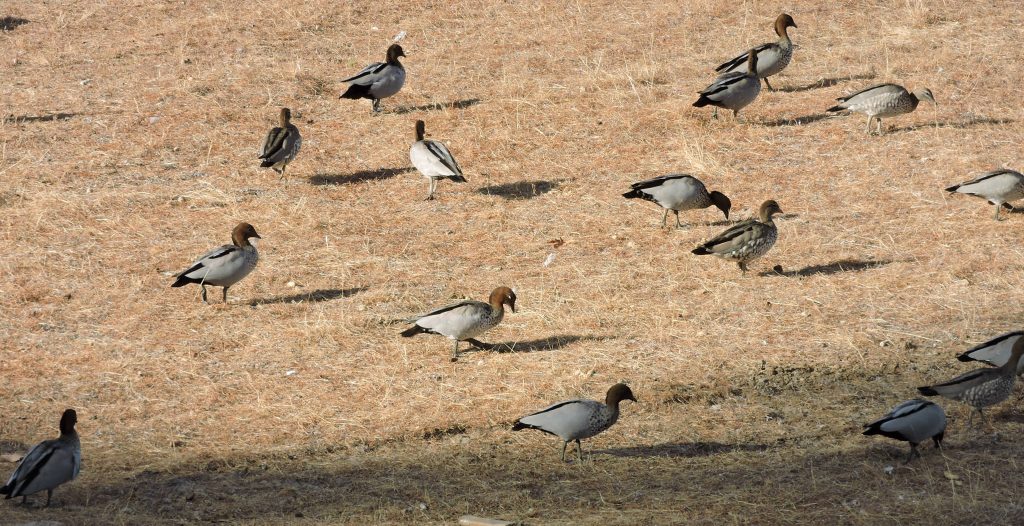
The largest of the native water birds are the Mountain Ducks which breed here each year. The drakes can be very aggressive from the mating season until the ducklings are fully fledged and we watch their skirmishes with amusement. There are quite a lot of them now, so plenty of activity to watch. It would seem that the larger the bird, the longer the ducklings take to become independent as it is many months before these ducklings learn to fly and even then they keep in their family group. As in most bird species, the drake has the more attractive plumage, characterised by his orange neck and wide white collar whilst the female has a distinctive white circle around her eye. These ducks are very “chatty” with each other, particularly when courting, having a distinctive voice.
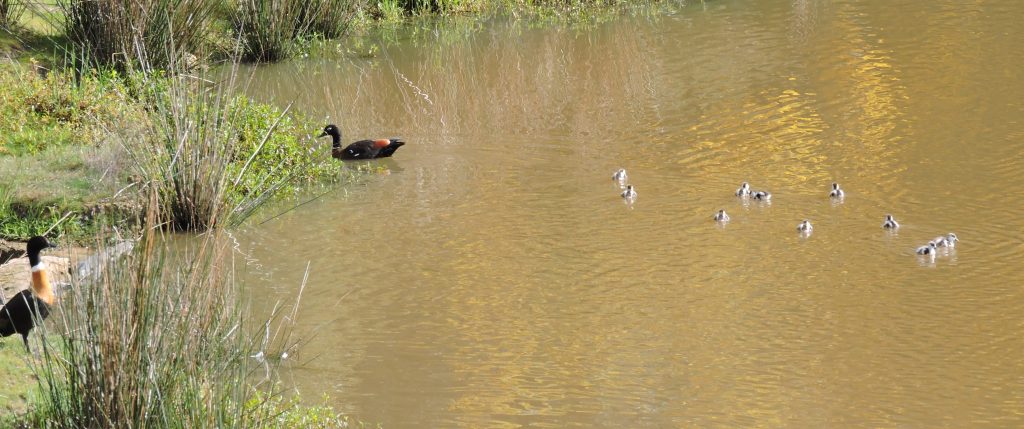
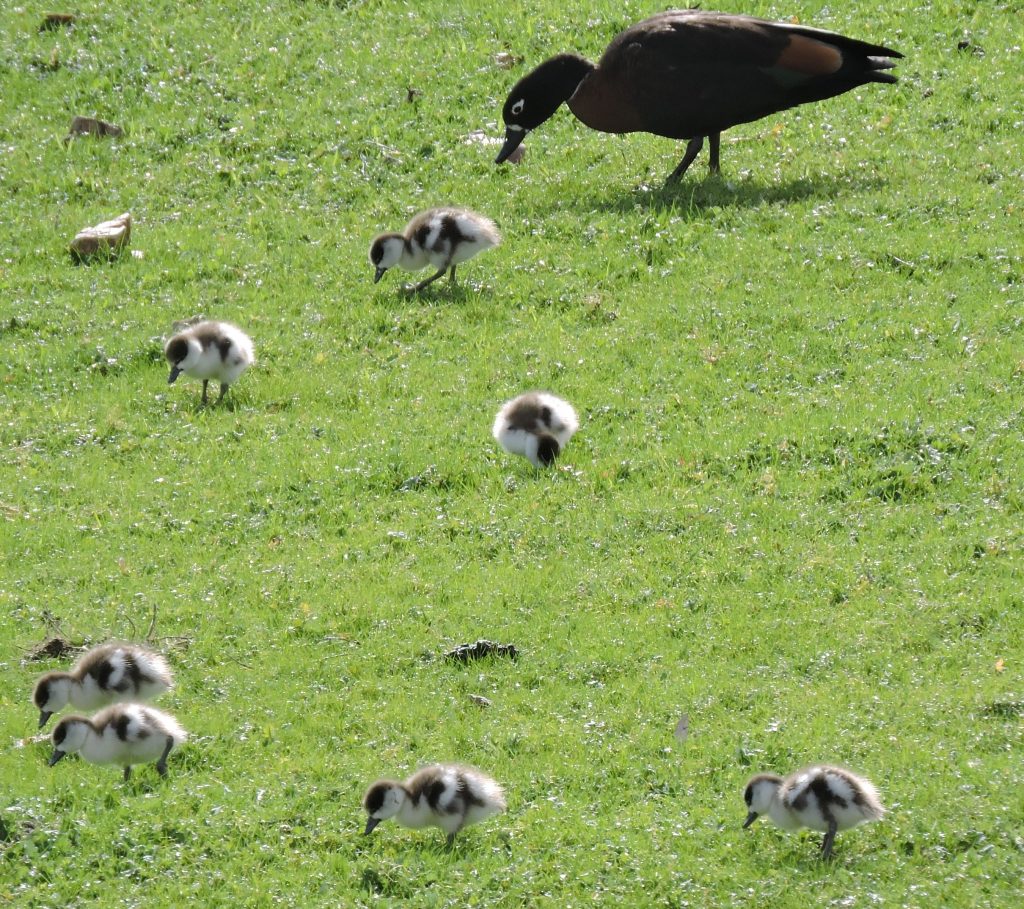
Finally there are the resident domesticated geese, a mixture breed, probably Toulouse and Emden. There were 5 of them when we first came here and they have increased in numbers each year. At one stage we managed to catch 6 and they went off to a new home at a winery near Yallingup. Since then the remaining 6 have increased to 18 and there are several geese sitting on eggs as I write, in nests they have made on the islands in the main dam. Here are some newly hatched goslings and below is how they look as they get their adult plumage.
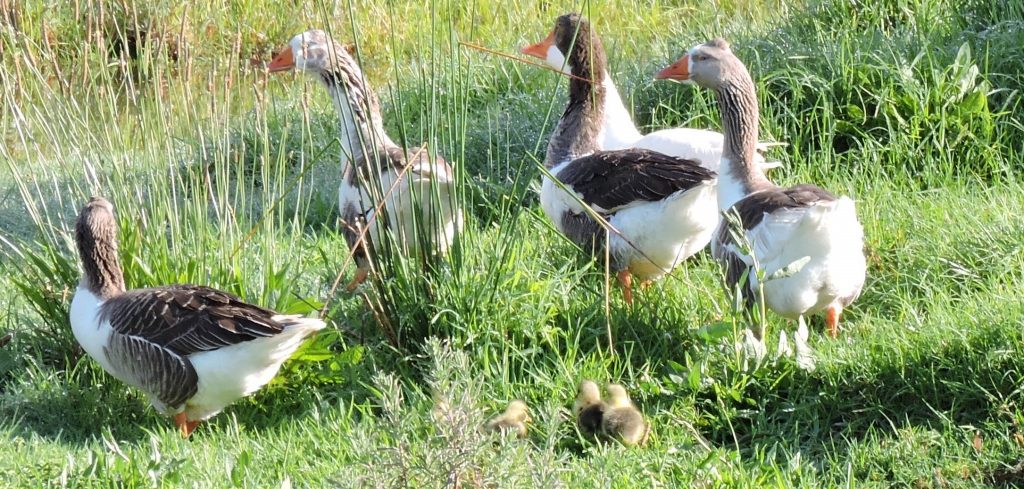
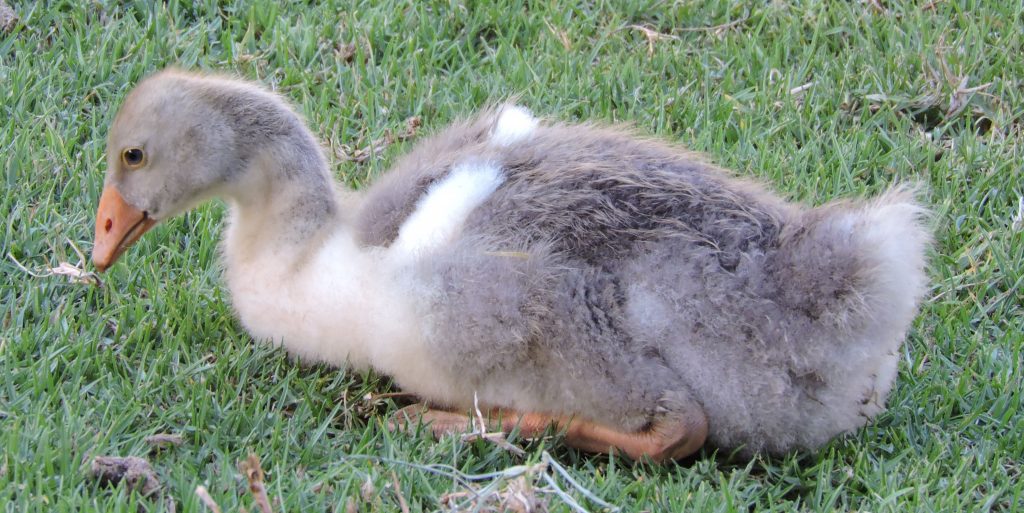
No farm is complete without some chooks, We buy some older laying Isa Browns from the local free-range egg farm every so often, so whilst they don’t lay as many eggs as younger birds, the eggs are a good size. They are shut up at night and let out to free range most days.
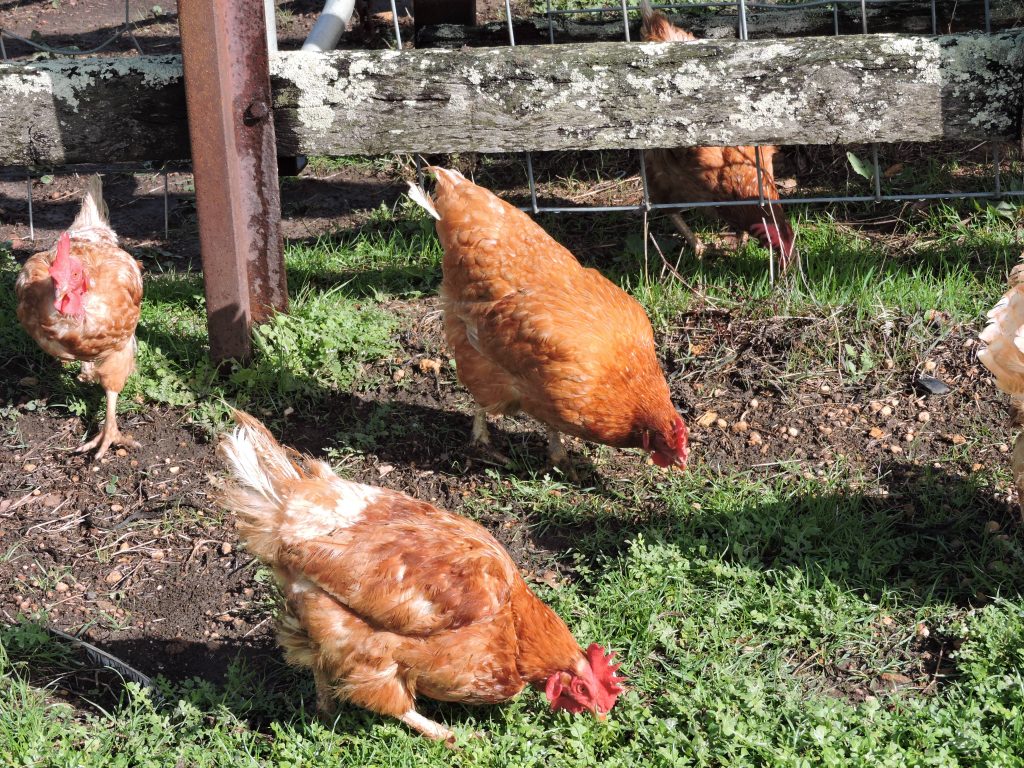
Of course somebody thought we needed a rooster or two and so we ended up with three, which is just too many for a small flock. Thus they are now about 4 years old and live in the boy’s pen across the yard from the house, occasionally being let out to strut around and take in the view of the property from the veranda. Overnight visitors are always warned that they start crowing early.
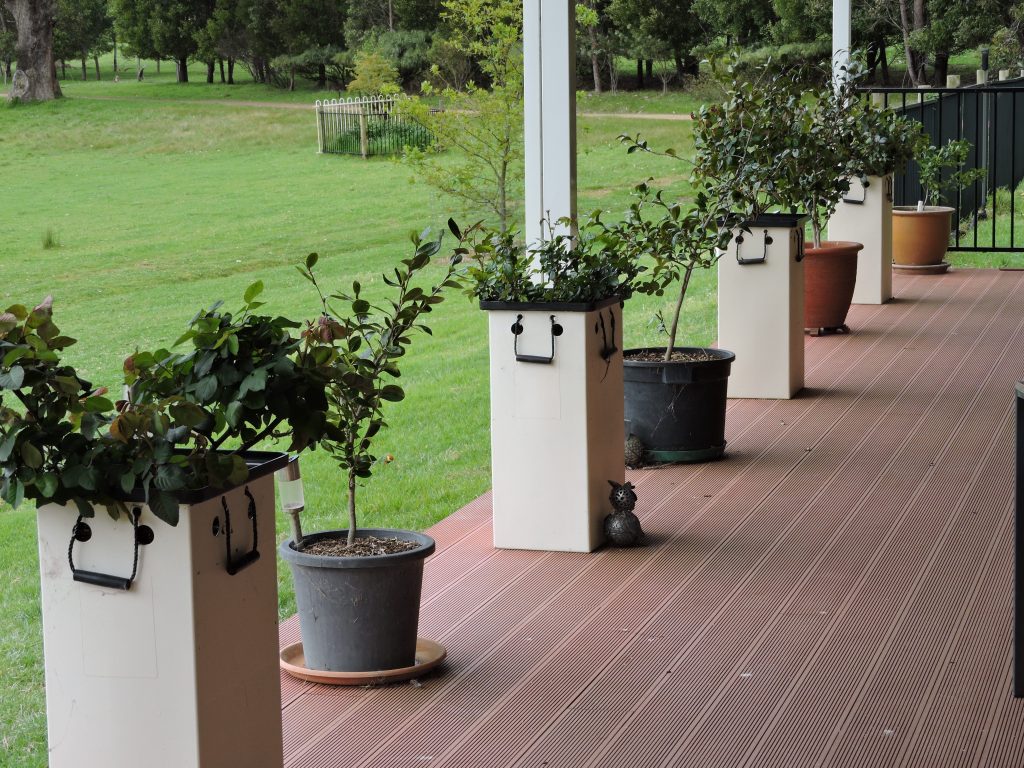
Here is our veranda, a great place to watch the birds and when we’re not about, the smaller birds come to feed on any insects and crumbs they can find. It is a great place to sit contemplating the scenery at any time of the year.
